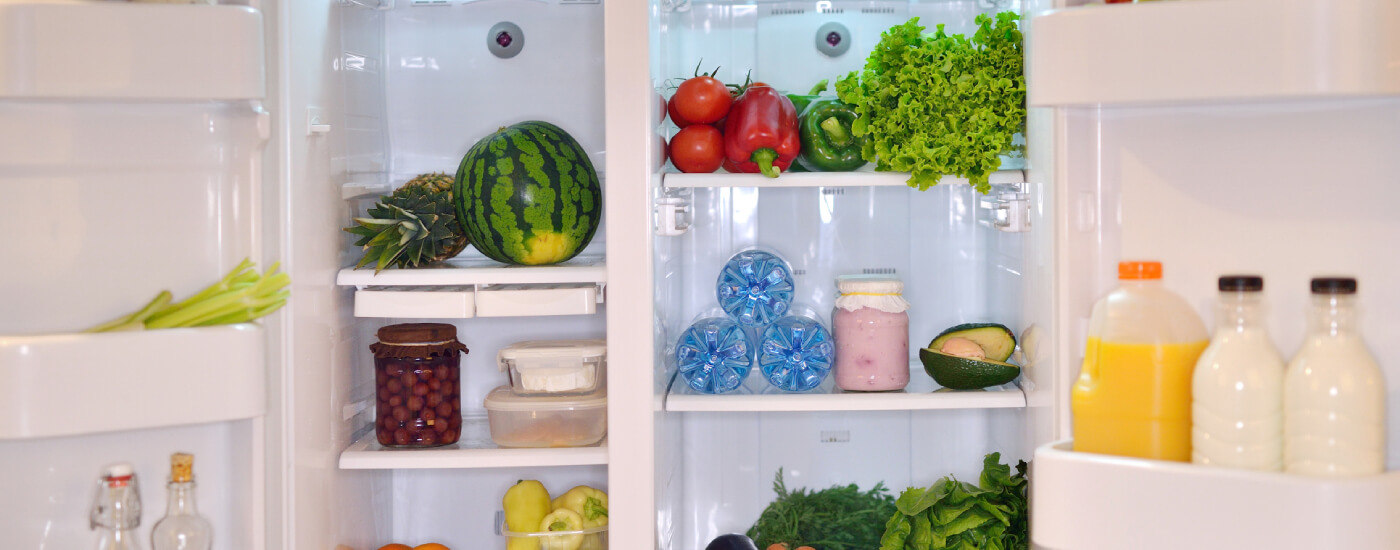Icebox Nightmare: How to Whip Your Refrigerator into Shape
Having a clean refrigerator is like having a strong foundation for your house; it strengthens everything else you do in the kitchen. When your fridge is out of control, it can be hard to find items, and forgotten foods can get moldy, causing health hazards. Fortunately, getting a refrigerator back into good condition is a pretty straightforward process of common sense, household tips, and advice.
Baking Soda Soaks Up Moisture
Homemakers have long praised the benefits of baking soda. One of the most well-known uses for this wonder-product is keeping refrigerators dry and odor-free. Moisture in the air can contribute to food spoilage. Since it’s hard to air out the fridge, keeping a box of baking soda in there can absorb it. In addition, the unique properties of baking soda allow it to also absorb those funky smells. So don’t worry about storing onions, fish or other odorous foods; the baking soda box has you covered. Just remember to change it out every three months or so for the best results.
Scrub Out Spills
Taking care of spilled food and drinks promptly avoids unsightly sticky messes that only seem to attract more crumbs and gunk. Warm soapy water is generally sufficient for these simple clean-ups. If you have those refrigerator shelves with a bit of a lip, chances are the spills are contained to that shelf; otherwise, it’s best to remove as much from the refrigerator’s contents as you can to ensure you’ve taken care of the entire spill. Use a soft rag to avoid scratching the interior glass or plastic. You may want to wear cleaning gloves for comfort. Once the shelves are clean, consider lining the shelves of the refrigerator with plastic wrap. When it’s overrun with spills, just roll up the plastic wrap and toss it; then, apply a fresh and clean layer of plastic wrap.
Remove the Drawers and Clean in the Sink
Hot, soapy water is the best way to wash down the interior of your refrigerator. For efficiency’s sake, do pull out all of the contents to make sure you can comfortably reach all of the inside walls, shelves, floor, and ceiling. If you have the kind of refrigerator where the shelves are removable, take them out and pop them into the kitchen sink. Use hot water and ordinary dish soap to clean and scrub them thoroughly. The same goes for the interior shelves, door baskets, bins, and fruit and vegetable drawers. When cleaning the inside of the fridge, start at the top and work your way down. Wipe down the ceiling, then the walls, and then the floor. Follow that by the interior of the doors, and then wipe down the door handles for good measure.
Say Goodbye to the Questionable Stuff
Cleaning the inside of the refrigerator is a great time to clean out the fridge. Carefully inspect everything you pull out of the fridge. Don’t put back anything moldy, expired or even questionable to avoid food poisoning. Dry and crusty cheese, moldy bread, expired condiments, and wilted greens are just a few examples of things that shouldn’t go back into your clean and fresh refrigerator. Avoid the problem of expired and spoiled food items in the future by marking them directly with stickers or Sharpies; keep a running list on the outside of the fridge of things that are in danger of expiring soon. Perhaps this will motivate or inspire you to get creative in the kitchen!
Set Your Shelving up for Success
Proper shelving is essential for efficient cooling in the refrigerator. After all, the circulation of air in the fridge is what’s most important for keeping cold foods cold. Arrange the items in your fridge according to usage for best results. Keep fruits and vegetables together. Store meats on the bottom shelf so that if something spills, it doesn’t contaminate or spoil everything underneath it, too. Consider storing milk on an interior shelf instead of the door; some believe that the opening and closing of the door affects how long them milk lasts and that storing it on the door causes it to spoil faster. If possible, adjust the shelves in your refrigerator to reflect your own storage needs better, especially if you’re moving bulky items like gallon milk containers off the door and onto shelves.
Cleaning out the fridge sounds like a daunting task but going after it in concrete steps can make it a manageable task. By undertaking it regularly, even a light cleaning every week and a deep cleaning every month or two months, you’ll see how easy it is to keep your fridge cleaner, which can help preserve your cold food and drinks longer, in addition to providing healthier food storage.



